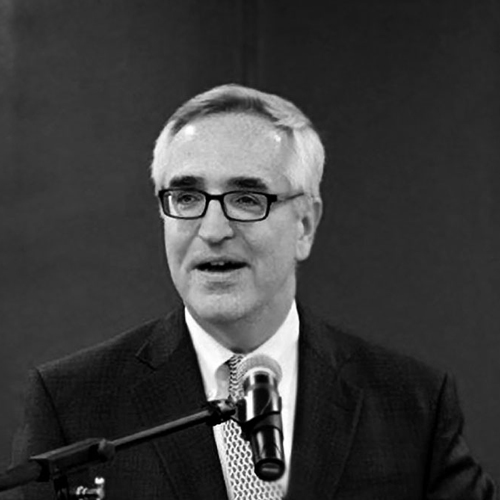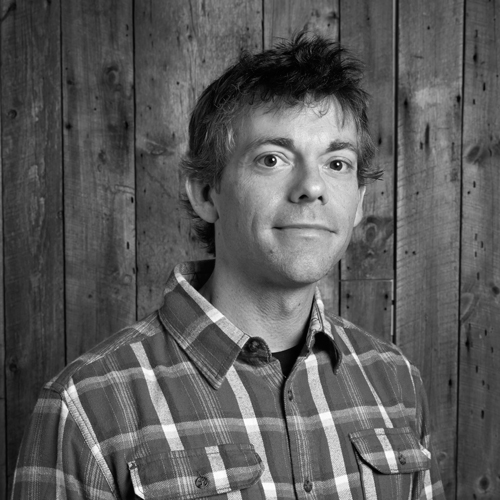“The first time I worked at Levi’s, I’d come home and tell my young son about the company’s cool products and connection to the community, and I felt a great deal of pride in doing so,” says Seth Jaffe, general counsel of Levi Strauss & Co. (LS&C). “When my daughter reached a similar age, I wanted to feel and share that sense of pride again—about my company’s place in the world and how it resonates with consumers.”
It’s the social responsibility that brought Jaffe back after more than a decade removed from working in the brand’s legal department. In its 150+ year past, LS&C has been known for its corporate responsibility initiatives (inventing women’s blue jeans, global health education, and HIV/AIDS prevention). As general counsel, Jaffe helps bring those innovative projects to the forefront of the organization and then execute on the legal end to make them happen. “Some brands have an emotional connection to people that is almost tangible, and that’s what drew me back to Levi’s after a long hiatus,” Jaffe says.
Social responsibility has always been in Jaffe’s blood. After obtaining his law degree from the University of Michigan, he considered a career in public-interest law, but ultimately joined McCutchen (now Bingham McCutchen) as a litigator, instead. “I wanted to help others, but I also wanted to eat,” says Jaffe, who nevertheless found time to do pro bono work. When Jaffe was at McCutchen, LS&C approached him, and he saw an opportunity to align his personal and professional interests by working for a company that’s highly invested in the communities it touches.
Social responsibility is ingrained in the company’s 161-year history. In 1854, the year after a Bavarian immigrant named Levi Strauss set up a business in San Francisco, he gave $5 to a local orphanage, now called the Edgewood Center for Children and Families. It was the beginning of a centuries-long tradition of sharing prosperity. “Shareholders and management have always considered the company a place at which we do things according to a particular set of values and principles,” Jaffe says of his company, which still supports the Edgewood Center. “And in seeing that, I realized that working here fulfilled both sides of my brain, allowing me to make a business impact as well as a social impact. I could do well and do good.”
Jaffe spent 15 years at LS&C in the mid ‘80s and ‘90s, serving as chief counsel for Europe and the Americas. He ultimately left to answer the siren song of Silicon Valley in 1999. The venture he joined, a health-care IT company bringing caregiver resources to the Internet, was revolutionary but lacked funding. Jaffe left to join Williams Sonoma as general counsel. He held the position for 10 years, until a headhunter approached him about coming back to LS&C as general counsel. “If it had been the same company it was when I first worked there, I wouldn’t have come back,” Jaffe says, referring to the company’s fiscal struggles. In 1996, LS&C earned $7.1 billion in revenues. By 2003, however, revenues had fallen to $4.2 billion, and they barely rose as the company failed to translate affinity for the brand into purchases.
Then lightning struck—twice. “I was interviewing with Steve Neal, the chairman of the board, and he kept looking at his Blackberry, which I thought was a bit odd,” Jaffe says. “Then suddenly he said, ‘I can finally tell you: We just announced we have a new CEO, and you’ll be interviewing with him tomorrow.’” That CEO was Chip Bergh, the 57-year-old former Procter & Gamble executive and US Army captain who would turn the brand around by bringing discipline that had been missing from the company for some time. “People feel deeply connected to the Levi’s brand, and I wanted to reengage in that,” Jaffe says. “At the same time, I saw Chip’s vision of turning Levi’s into the best apparel company the world, and how he thought he’d get there really resonated with me.” Jaffe started the same day as Bergh.
Bergh overhauled the business structure, bringing cost discipline and increased productivity, as well as driving a global focus on product and marketing. But he also ensured LS&C did not lose the connection to its roots. He did this by extending the idea of “profits through principles,” a way of thinking about the brand as intertwined with the community.
Bergh’s vision reminded employees that LS&C is about more than jeans and profit margins. Struggling in the wake of the 1906 San Francisco earthquake and the Great Depression, LS&C continued to find work for employees because it felt a deep responsibility to them. In the 1940s, it was the first apparel company to desegregate its plants in the South. More recently, Levi Strauss’s great-great-grandnephew Robert Haas, who was CEO from 1984 to 1999, spearheaded a code of conduct for overseas manufacturers that established labor, health, safety, and environmental requirements for suppliers based upon internationally recognized standards; he also extended medical benefits to employees’ domestic partners, a worldwide first. “We’ve reached a place now where consumers expect us to be socially responsible and active in the community, and Chip wanted to connect that to building the brand and the business,” Jaffe says.
Since then, LS&C has continued to focus on the communities it touches, more recently establishing a program called “Improving Workers’ Well-Being.” Having already set a code of conduct for overseas manufacturers 20 years ago, the company wanted to do more. To that end, it established a broad program to improve the lives of the people who make LS&C clothing. A joint effort between LS&C and the Levi Strauss Foundation, the “Improving Workers’ Well-Being” program reaches out to suppliers in third-world communities, places like Bangladesh, Pakistan, and Haiti, showing why it’s in their best interests to improve workers’ well-being. As an example, employee absenteeism is rampant due to health problems that are easily preventable, particularly those related to women’s reproductive health. “We aligned ourselves with the HERProject to help educate women about basic health issues,” Jaffe says. “In doing so, the program not only helps these women live healthier lives but also improves attendance and lowers turnover, allowing our suppliers to be more productive.”
Over the past 25 years, corporate responsibility has come to encompass sustainability, a necessity in a world in which consumers seek products they can feel good about. “People want to look good but also feel good about what they’re buying, so we’re working to ensure that our products are made using environmentally sensitive processes,” Jaffe says. In 2010, the company introduced “Levi’s Water<Less” jeans, which was spurred from a 2007 life-cycle assessment on Levi’s jeans. The study found that one of the largest environmental impacts of the company’s products, from cradle to grave, was the use of water. A single pair of Levi’s 501 jeans uses more than 3,000 liters of water—49 percent during the cotton-growing stage, 6 percent during the manufacturing process, and 45 percent during consumer washing. By making simple changes to the finishing process, the company was able to reduce water consumption by an average of 28 percent. Using traditional finishing methods, the average pair of jeans goes through between 3 and 10 washing cycles, using 42 liters of water; new methods use dry stones in place of wet ones to create certain finishes and reduce the number of wash cycles by combining multiple wet-process cycles into one. To date, Levi’s has made more than 75 million garments using the Water<Less process—and in the past year alone has made 22 million garments, saving 190 million liters of water. The initiative also encourages consumers to think about their role in water consumption. “The buzz is that at a conference Chip said that we shouldn’t wash our jeans,” Jaffe says, “but the message is that they just need to be washed a lot less than people think they do.”
In 2014, the company connected with patrons of the brand in another way: a 20-year, $220 million investment in the naming rights for the San Francisco 49ers Levi’s Stadium. The fit was perfect: Two iconic San Francisco organizations, both family-owned for much of their history and committed to sustainability. The name allows Levi’s to reach fans not just through football, but concerts will also be held at the stadium, reflecting the brand’s association to music. “Our products have historically been highly connected to music, with one of our former marketing directors claiming that based on pictures, around 70 percent of the fans at Woodstock wore Levi’s 501 jeans,” Jaffe says. More than 68,000 fans will walk into the stadium for each event, connecing them to the Levi’s brand. Just as Jaffe tells his children about everything LS&C is doing, those 68,000 fans will continue to spread the company’s message.


